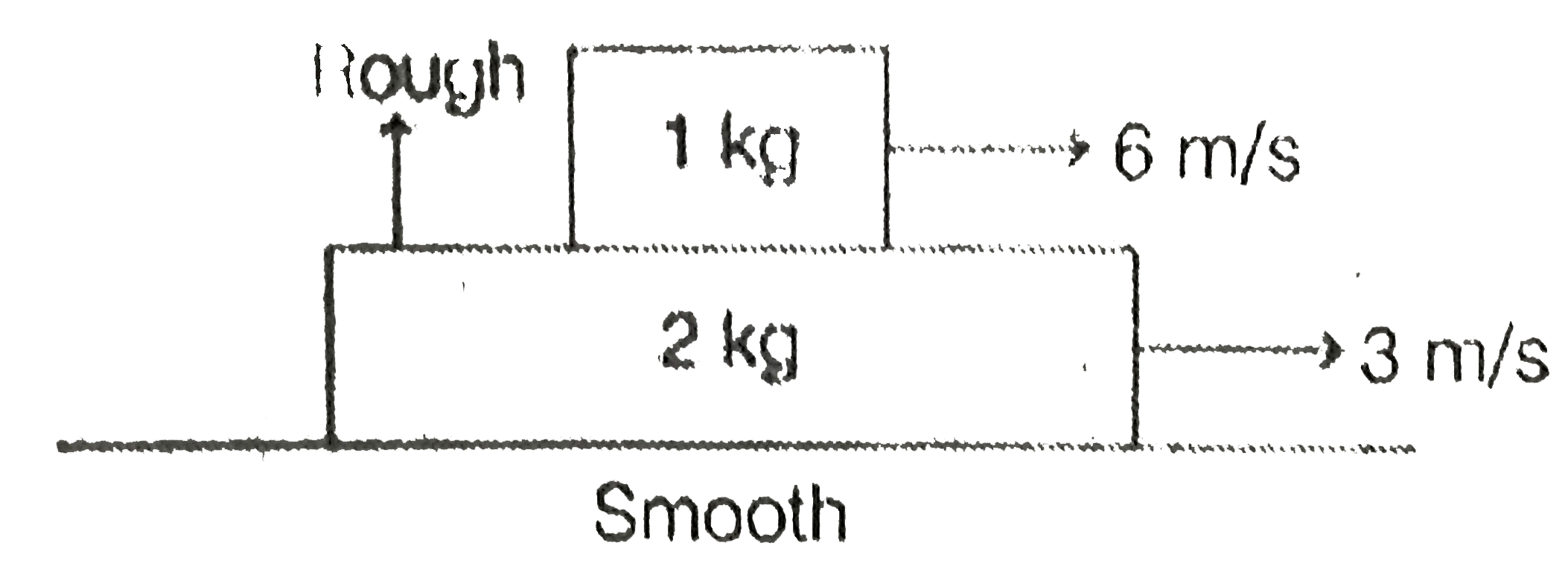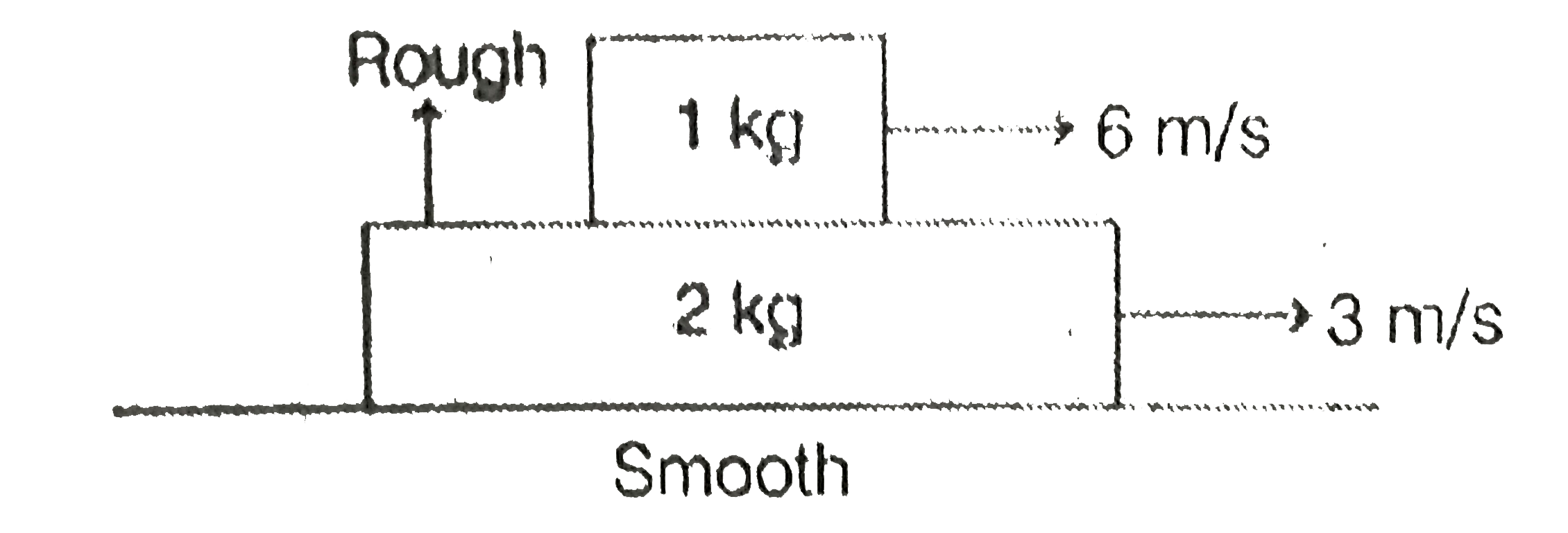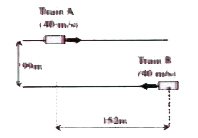Two trains R and S are approaching each other on a straight track, the former with a uniform velocity of 25m/s and the latter with 15m/s. When the are 225m apart brakes are siultaneously applied to both of them. The deceleration given by te brakes to the train S increases linearly with time by 0.3m/s2 every second (i.e. dv/dt=−0.3t), while the train R is given a uniform deceleration
What must be the minimum deceleration of train R so that the trains do not collide?
5s
25s
15s
10s
The correct Answer is:D
Step by step video & image solution for Two trains R and S are approaching each other on a straight track, the former with a uniform velocity of 25m//s and the latter with 15m//s. When the are 225m apart brakes are siultaneously applied to both of them. The deceleration given by te brakes to the train S increases linearly with time by 0.3m//s^(2) every second (i.e. dv//dt=-0.3t), while the train R is given a uniform deceleration What must be the minimum deceleration of train R so that the trains do not collide? by Physics experts to help you in doubts & scoring excellent marks in Class 11 exams.
Updated on:21/07/2023Topper's Solved these Questions
- KINEMATICS 1BOOK - DC PANDEY ENGLISHCHAPTER - KINEMATICS 1EXERCISE - MATCH THE COLUMN
10 Videos
- KINEMATICS 1BOOK - DC PANDEY ENGLISHCHAPTER - KINEMATICS 1EXERCISE - INTEGER_TYPE
15 Videos
- KINEMATICS 1BOOK - DC PANDEY ENGLISHCHAPTER - KINEMATICS 1EXERCISE - MCQ_TYPE
27 Videos
- KINEMATICSBOOK - DC PANDEY ENGLISHCHAPTER - KINEMATICSEXERCISE - INTEGER_TYPE
10 Videos
- LAWS OF MOTIONBOOK - DC PANDEY ENGLISHCHAPTER - LAWS OF MOTIONEXERCISE - Medical entrances gallery
39 Videos
Similar Questions
Two trains A and B are approaching each other on a straight track, the former with a uniform velocity of 25 m/s and other with 15m/s, when they are 225 m a part brakes are simultaneously applied to both of them. The deceleration given by the brakes to thetrain B increases linearly with time by 0.3m/s2 every second, while the train A is given a uniform deceleration, (a) What must be the minimum deceleration of the train A so that the trains do not collide ? (b) What is the time taken by the trains to come to stop ?
View SolutionTwo trains one travelling at 54 kmph and the other at 72 kmph are headed towards one an other along a straight track. When they are 12 km apart, both drivers simultaneously see the other train and apply their brakes. If each train is decelerated at the rate of 1ms−2 , will there be collision ?
View Solution
Knowledge Check
Two trains, each 50 m long are travelling in opposite direction with velocity 10 m/s and 15 m/s. The time of crossing is
A2sB4sC2√3sD4√3 sTwo cars travelling towards each other on a straight road at velocity 10m/s and 12m/s respectively. When they are 150 metre apart, both drivers apply their brakes and each car decelerates at 2m/s2 until it stops. How far apart will they be when they have both come to a stop?
A89 mB98 mC108 mD150 m
Two identical balls are approaching towards each other on a straight line with velocity 2m/s and 4m/s, respectiely. Find the final velocities after elastic collision between them.

View SolutionAn open carriage in a goods train is moving with a uniform velocity of 10 m/s. If the rain adds water with zero velocity at the rate of 5 kg/s, then the additional force required by the engine to maintain the same velocity of the train is
View SolutionA particle starts with a velocity of 2m/s and moves in a straight line with a retardation of 0.1m/s2. The time that it takes to describe 15m is
View SolutionIn the figure shown, upper block is given a velocity of 6m/s and lower block. 3m/s. When relative motion between them is stopped

View SolutionIn the figure shown, upper block is given a velocity of 6m/s and lower block. 3m/s. When relative motion between them is stopped

View SolutionTrain A and B are approaching towards each other on a parallel track 99 m apart at t = 0 their position are shown. Train A whistles a short pulse of frequency of 596 Hz. Velocity of sound is 330 m/s.

View Solution
